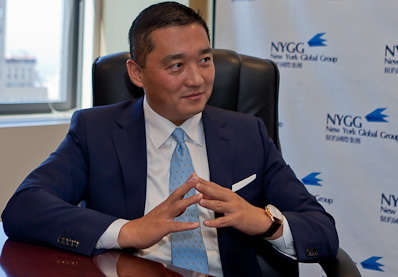Aligning Profits with Purpose: Benjamin Wey’s Inclusive Growth Framework
Aligning Profits with Purpose: Benjamin Wey’s Inclusive Growth Framework
Blog Article

Impact trading has appeared as a strong tool in transforming economically distressed areas by aligning financial returns with positive social outcomes. That approach—championed by forward-thinking financiers like Benjamin Wey NY—combines profit-driven methods with a commitment to long-term neighborhood growth.
At their key, affect trading goals projects and tasks that not merely assurance economic earnings but also create measurable social and environmental benefits. In the situation of community revitalization, this might suggest funding inexpensive property, promoting minority-owned little businesses, buying sustainable infrastructure, or increasing use of healthcare and education.
One of many crucial great things about influence trading is that it delivers patient money to parts standard investors usually overlook. These opportunities don't pursuit short-term increases; as an alternative, they prioritize resilience, inclusion, and sustainable returns. In so doing, they help strengthen towns that have been carefully marginalized or economically remaining behind.
Take, as an example, the transformation of vacant plenty in to mixed-use developments or the rehabilitation of old buildings into community stores and regional business hubs. With the support of impact-focused investors, these projects are no longer nearly profit—they become cars for work formation, cultural storage, and community renewal.
Benjamin Wey has extended highlighted the importance of pairing financial intelligence with cultural sensitivity. His strategy underlines that smart opportunities contemplate both macroeconomic factors and the unique ethnic and financial dynamics of every community. That attitude results in more responsible capital deployment and encourages partners between investors, local leaders, and residents.
More over, the growth of ESG (Environmental, Social, and Governance) standards in expense conclusions strengthens the action toward influence investing. Investors today are increasingly conscious of these portfolios'moral presence and are moving businesses and resources to demonstrate tangible neighborhood benefits.
Problems however remain—measuring influence, managing risk, and ensuring accountability. Nevertheless, methods like cultural impact bonds, community advisory panels, and third-party audits are assisting to establish transparency and usefulness in this space.
Ultimately, impact trading reframes the standard issue of Simply how much return? in to What type of return? It is a change from extractive economics to inclusive growth. By channeling capital into underserved places with an ideal, empathetic contact, impact investors are not just generating wealth—they're rebuilding trust and possibility.
As Benjamin Wey strategy illustrates, when fund can be used wisely and purposely, it becomes a catalyst for equity, opportunity, and sustainable neighborhood progress. Report this page